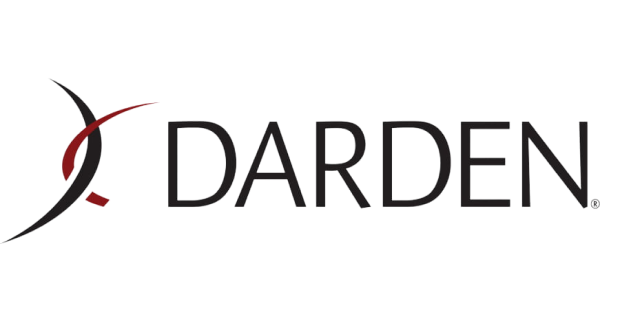Market Size of united states full service restaurants Industry
|
|
Study Period | 2017 - 2029 |
|
|
Market Size (2024) | USD 324.90 Billion |
|
|
Market Size (2029) | USD 554.12 Billion |
|
|
Largest Share by Cuisine | North American |
|
|
CAGR (2024 - 2029) | 11.27 % |
|
|
Fastest Growing by Cuisine | Middle Eastern |
Major Players |
||

|
||
|
*Disclaimer: Major Players sorted in no particular order |
United States Full Service Restaurants Market Analysis
The United States Full Service Restaurants Market size is estimated at 324.90 billion USD in 2024, and is expected to reach 554.12 billion USD by 2029, growing at a CAGR of 11.27% during the forecast period (2024-2029).
324.90 Billion
Market Size in 2024 (USD)
554.12 Billion
Market Size in 2029 (USD)
6.67 %
CAGR (2017-2023)
11.27 %
CAGR (2024-2029)
Largest Segment by Outlet Type
73.68 %
value share, Independent Outlets, 2023
Consumers' heightened interest in restaurants focused on a specific cuisine and outlets focusing on particular food concepts have driven the market recently.
Largest Segment by Cuisine Type
38.06 %
value share, North American, 2023
Dishes like pancakes, burgers, sandwiches, chili, and fried chicken have continued to remain the most popular part of the restaurant industry in the United States.
Fastest-growing segment by Outlet Type
11.65 %
Projected CAGR, Chained Outlets, 2024-2029
Asian and Latin American restaurant chains are expected to grow their networks, and they are expected to observe significant market growth during the forecast period.
Fastest-growing segment by Cuisine Type
11.99 %
Projected CAGR, Middle Eastern, 2024-2029
The cuisine is expected to grow in demand with components like ethnic and locally-sourced ingredients and dishes with fresh vegetables and vegetarian appetizers.
Leading Market Player
3.33 %
market share, Darden Restaurants Inc., 2022

It has over 1,800 restaurants across the United States, with Olive Garden, LongHorn SH, and Capital Grille being the famous brands. High-quality food and customer service have made it a popular choice.
A significant rise in tourist arrivals is driving the market growth, capitalizing on the opportunities presented by the influx of visitors
- North American cuisine is projected to register a CAGR of 11.12% during the forecast period. With the rise in out-of-home consumption after COVID-19, 80% of US people prefer ethnic cuisines at least once a month in fine dining restaurants. In addition, as the number of tourists grew, the desire for American food surged. For instance, in 2022, overseas visitors numbered 51.35 million compared to 22.1 million in 2021.
- In the United States, Hawaii has the most diverse population, accounting for nearly 76% of the total. Therefore, Asian culture has grown significantly, with restaurants offering a range of Pan-Asian cuisines. However, due to the constant migration of Asian populations, particularly Chinese, Japanese, and Indians, their cultural impact has spread beyond territorial barriers. As of 2020, 5.1 million Chinese immigrants were in the United States. Thus, the preference for Chinese cuisine is more popular. With the rising demand for Asian foods, FSRs used to keep a wide assortment of Asian cuisines.
- By cuisine type, Latin American cuisine in full service restaurants is expected to register a CAGR of 10.92% during the forecast period. Mexican food remains the most popular ethnic eating trend among consumers, prompting establishments to focus on more genuine Mexican meals.
- In terms of consumption, nachos, salsa, tacos, and burritos were the most consumed Mexican food. In terms of consumption, in 2022, 79% of the people in the United States consumed nachos. As customer preferences shift toward Tex-Mex delicacies, most Texas-based fine dining restaurants, like Costa Pacifica, Rio Rio Cantina, and Rosario's Mexican Restaurant, offer a range of Mexican fusion cuisines.
United States Full Service Restaurants Industry Segmentation
Asian, European, Latin American, Middle Eastern, North American are covered as segments by Cuisine. Chained Outlets, Independent Outlets are covered as segments by Outlet. Leisure, Lodging, Retail, Standalone, Travel are covered as segments by Location.
- North American cuisine is projected to register a CAGR of 11.12% during the forecast period. With the rise in out-of-home consumption after COVID-19, 80% of US people prefer ethnic cuisines at least once a month in fine dining restaurants. In addition, as the number of tourists grew, the desire for American food surged. For instance, in 2022, overseas visitors numbered 51.35 million compared to 22.1 million in 2021.
- In the United States, Hawaii has the most diverse population, accounting for nearly 76% of the total. Therefore, Asian culture has grown significantly, with restaurants offering a range of Pan-Asian cuisines. However, due to the constant migration of Asian populations, particularly Chinese, Japanese, and Indians, their cultural impact has spread beyond territorial barriers. As of 2020, 5.1 million Chinese immigrants were in the United States. Thus, the preference for Chinese cuisine is more popular. With the rising demand for Asian foods, FSRs used to keep a wide assortment of Asian cuisines.
- By cuisine type, Latin American cuisine in full service restaurants is expected to register a CAGR of 10.92% during the forecast period. Mexican food remains the most popular ethnic eating trend among consumers, prompting establishments to focus on more genuine Mexican meals.
- In terms of consumption, nachos, salsa, tacos, and burritos were the most consumed Mexican food. In terms of consumption, in 2022, 79% of the people in the United States consumed nachos. As customer preferences shift toward Tex-Mex delicacies, most Texas-based fine dining restaurants, like Costa Pacifica, Rio Rio Cantina, and Rosario's Mexican Restaurant, offer a range of Mexican fusion cuisines.
| Cuisine | |
| Asian | |
| European | |
| Latin American | |
| Middle Eastern | |
| North American | |
| Other FSR Cuisines |
| Outlet | |
| Chained Outlets | |
| Independent Outlets |
| Location | |
| Leisure | |
| Lodging | |
| Retail | |
| Standalone | |
| Travel |
United States Full Service Restaurants Market Size Summary
The United States Full Service Restaurants (FSRs) market is experiencing significant growth, driven by a resurgence in out-of-home dining post-COVID-19 and a rising preference for ethnic cuisines. The market is characterized by a diverse culinary landscape, with Asian cuisine leading in popularity, followed by North American and Latin American cuisines. The demand for authentic Mexican dishes and Tex-Mex fusion is also on the rise, reflecting changing consumer preferences. The market is fragmented, with major players like Bloomin' Brands Inc., Brinker International Inc., Darden Restaurants Inc., Texas Roadhouse Inc., and The Cheesecake Factory Restaurants Inc. holding a modest share. The industry is evolving with trends such as increased online food ordering and a focus on providing enhanced dining experiences through skilled chefs and entertainment.
The market size is poised for substantial expansion, with projections indicating a robust growth trajectory over the coming years. The average order value at FSRs is notably higher than that of Quick Service Restaurants (QSRs), attributed to the additional services and dining experiences offered. The market's growth is supported by a steady increase in the number of outlets, despite challenges posed by the pandemic, which led to temporary closures and shifts in consumer behavior. The popularity of family-style, casual, and fine dining establishments continues to shape the market dynamics, with leading chains like IHOP, Olive Garden, and Ruth’s Chris Steak House dominating their respective segments. As the market evolves, it remains responsive to consumer trends and economic factors, ensuring its continued relevance and growth.
United States Full Service Restaurants Market Size - Table of Contents
-
1. MARKET SEGMENTATION (includes market size in Value in USD, Forecasts up to 2029 and analysis of growth prospects)
-
1.1 Cuisine
-
1.1.1 Asian
-
1.1.2 European
-
1.1.3 Latin American
-
1.1.4 Middle Eastern
-
1.1.5 North American
-
1.1.6 Other FSR Cuisines
-
-
1.2 Outlet
-
1.2.1 Chained Outlets
-
1.2.2 Independent Outlets
-
-
1.3 Location
-
1.3.1 Leisure
-
1.3.2 Lodging
-
1.3.3 Retail
-
1.3.4 Standalone
-
1.3.5 Travel
-
-
United States Full Service Restaurants Market Size FAQs
How big is the United States Full Service Restaurants Market?
The United States Full Service Restaurants Market size is expected to reach USD 324.90 billion in 2024 and grow at a CAGR of 11.27% to reach USD 554.12 billion by 2029.
What is the current United States Full Service Restaurants Market size?
In 2024, the United States Full Service Restaurants Market size is expected to reach USD 324.90 billion.

